STOLPERSTEINE GELSENKIRCHEN
Ausgrenzung erinnern

← Back
Stumbling Stones installed at Hauptstraße 63
|
HERE LIVED
 MARKUS JECKEL MARKUS JECKEL
BORN 1880
'POLENAKTION' 1938
BENTSCHEN / ZBASZYN
FATE UNKNOWN
|
HERE LIVED
 ISIDOR JECKEL ISIDOR JECKEL
BORN 1922
'POLENAKTION' 1938
BENTSCHEN / ZBASZYN
FATE UNKNOWN
|
HERE LIVED
 CILLA JECKEL CILLA JECKEL
NEE GILLER
BORN 1889
'POLENAKTION' 1938
BENTSCHEN / ZBASZYN
FATE UNKNOWN
|
Stumbling Stones planned to install at Hauptstraße 63 - (looking for sponsors)
 ELSE JECKEL ELSE JECKEL
BORN 1907
FLEED 1938
ENGLAND
|
 ROSA JECKEL ROSA JECKEL
BORN 1914
FLEED 1938
ENGLAND
|
 FEIGA PHILIPP FEIGA PHILIPP
NEE JECKEL
BORN 1917
FLEED 1939
ENGLAND
|
In agreement with Feiga Jeckel’s daughter, these three stumbling stones are also being laid at Haupt Strasse. 63 in memory of members of the family who are now symbolically reunited. We are looking for Sponsors for these stumbling stones. (Stand: 22.1.2017)
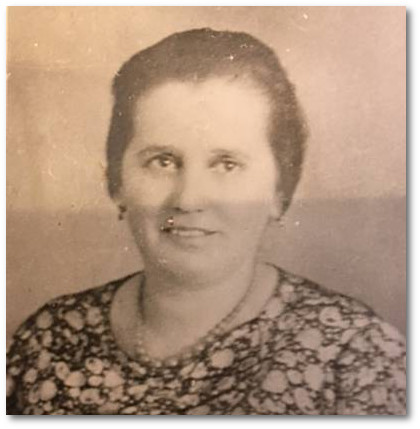
Ill.1: Cilla Jeckel
Markus Jeckel was born on 29 July 1880 in Weldirz, Galicia and worked as a haulage contractor. He was married to Cilla Jeckel, née Giller, who was born on 18 December 1889 and came from Rozniatow, Galicia. The couple had four children, Else who was born on 9 September 1907, Rosa who was born on 15 August 1914, Felga, nicknamed “Fanny”, who was born on 25 November 1917 and Isidor nicknamed “Isi” who was born in Gelsenkirchen on 20 October 1922. The Jeckel family lived at house number 63 on a street whose name in those days was Adolf-Hitler Strasse. Nowadays it is Haupt Strasse.
For some time in the thirties the daughters lived at their parents’ home at Adolf-Hitler-Strasse 63 but records are not complete. According to the Gelsenkirchen register, on 22 September 1937 Rosa Jeckel moved to Dortmund. [1] However, according to information from the Dortmund municipal archives, her name cannot be found there. But in late 1938 she managed to flee to England together with her sister Else. In 1956 she married Morris Joshua and in 1963 she lived in London under the name of Rosa Joshua [2]. Else Jeckel married Julius Jäckel, who originally came from Vienna, and in 1963 she also lived in London.
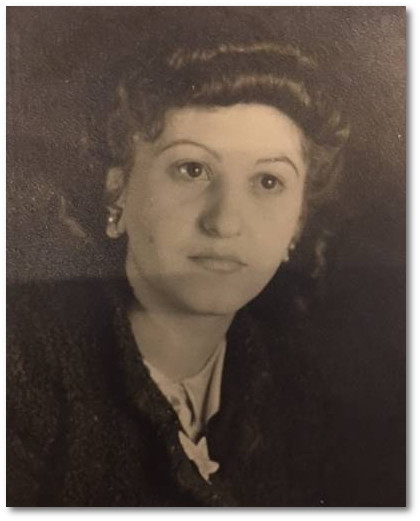
Ill.2: Feiga Jeckel
After the “Anschluss”, the annexation of Austria into the German Third Reich in March 1938 and the occupation of the Sudetenland in October of the same year, many Polish citizens living in Germany and Austria were still thinking of returning to Poland. But this was not what the Polish government wanted. On 6 October the Polish Government had gone so far as to revoke all Polish passports if their bearers had lived abroad for more than five years. The order was to come into force on 31 October. It meant that at least 15,000 Polish Jews resident in Germany would cease to be Polish citizens on the last day of October. For their documents to remain valid, they required a special note in their passports made by Polish consulates. But the Nazis anticipated this ruling and in late October 1938 some 18,000 Jews with Polish citizenship (so-called “Ostjuden” – Jews from the East) were arrested and forcibly deported over the Polish border to Bentschen (Zbąszyń) in Poland.
The so-called “Poland action” is an historical event that many people in Germany are hardly aware of. The expulsion came as a complete surprise to the Jewish Poles in Germany. On 28 October 1938 some 80 Jewish people of all ages were arrested in Gelsenkirchen and deported to Poland in “Reichsbahn” trains. In most cases they were taken to Bentschen (Zbąszyń) on the Polish border. ( Zbąszyń).
This measure taken by the Nazis meant that persecution had reached a new peak and was actually the start of the planned extermination of European Jews. The Jeckel family from Gelsenkirchen were also expelled to Poland.
|
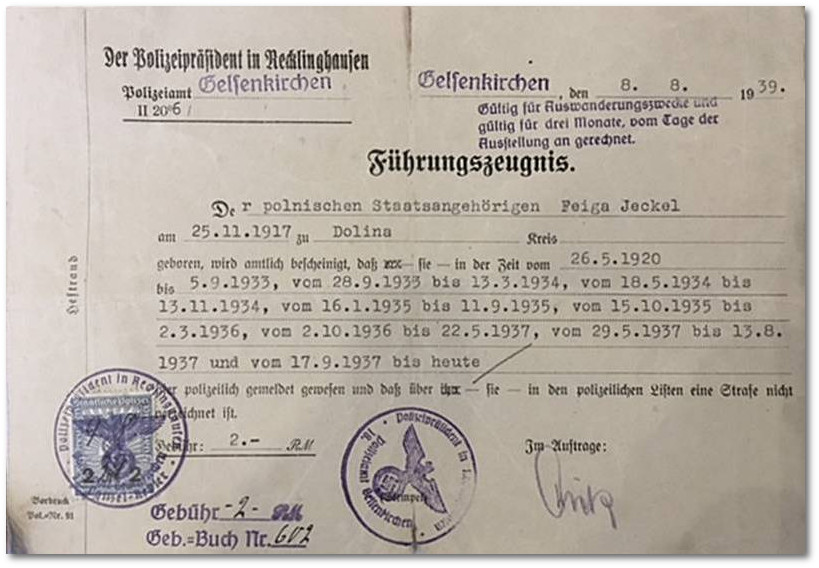
Ill.3: Police clearance certificate valid for the purpose of emigration, issued to Feiga Jeckel on 8 August 1939 in Gelsenkirchen
In the late 30s Feiga Jeckel was doing forced labour in an unknown place when a guard hit her with his rifle butt. Believing the badly injured woman was already dead, the guard just left her lying where she had collapsed. A Protestant clergyman found her, helped her and thus saved her life. The clergyman helped Feiga flee to England in late 1939. There, on 5 April 1940, Feiga (Fanny) married Richard Philipp who had fled from Hamburg.
|
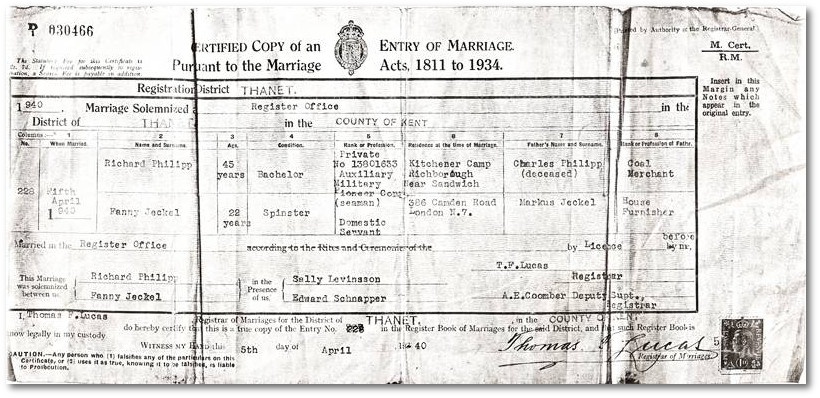
Ill.4: Feiga (Fanny) Jeckel and Richard Philipp’s marriage certificate of 5 April 1940. The couple had two children. The marriages of her sisters Rosa and Else remained childless.
|
Isidor Jeckel: "I believe a very hopeless star is shining for me.”
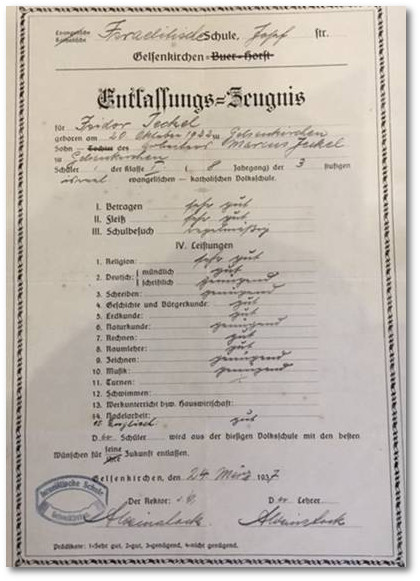
Abb.5: Isidor Jeckel’s final school report from the Jewish School on Josef Strasse in Gelsenkirchen. The report is dated 24 March 1937 and signed by the school principal and teacher Abraham Weinstock. We know the names of the following teachers at the Jewish School on Ring Strasse: Erna Goldbach, Saly Spier and Salomon Katz. Erna Goldbach was murderd 1944 in Riga-Kaiserwald, Salomon Katz was murderd 8. Februar 1943 in the Ghetto Theresienstadt. Sally Spier died 1934.
Since it became independent, the Jewish community in Gelsenkirchen endeavoured to maintain its own primary school. They managed to establish a primary school on what was then Neu Strasse. The growing Jewish population meant that in 1893 the establishment of a school was started at Ring Strasse 44. And in 1907 it had to be extended because of the growing number of pupils. Up to 1936 up to 155 children were taught in three classes. The numbers fell when many Jewish families fled from Nazi Germany.
In the mid 1930s the Nazis forced the Jewish community to close the school. Jewish children were also forced out of secondary schools and other primary schools, e.g. in Buer. The Jewish school was then set up in an old school building on Josef Strasse in the new town. It was there that Jewish children and teenagers gathered and where teachers tried to make normal schooling possible for pupils of all age groups. At the end of 1937 approx. 60% of all Jewish children still living in Germany, attended Jewish schools. After “Kristallnacht”, the Night of Broken Glass, Jewish pupils were finally excluded from all state schools.
|
After he left the Jewish school, Isidor Jeckel tried to emigrate to Palestine with the help of the Aliyah movement. In a letter of 10 August 1938 that he wrote to his friend Ernst Alexander, he said that due to his physical constitution he was considered unfit for the hard agricultural work in Palestine, to which he was not accustomed.
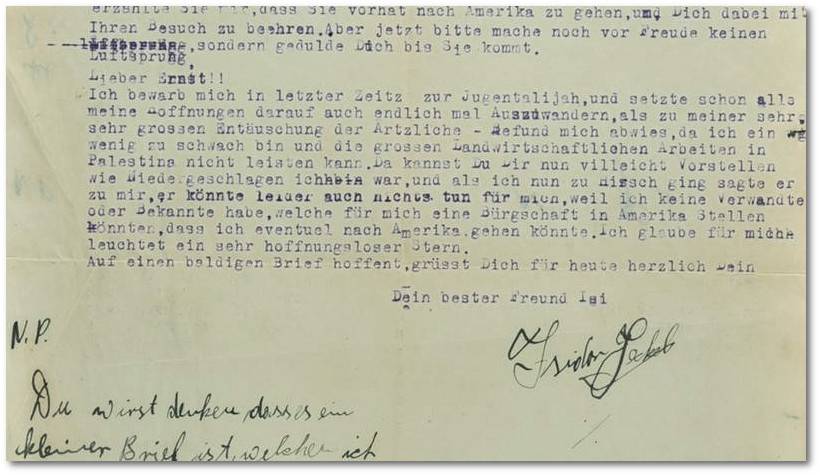
Ill.6: Letter from Isidor Jeckel. Growing lack of hope and existential fears in the letter of a young person
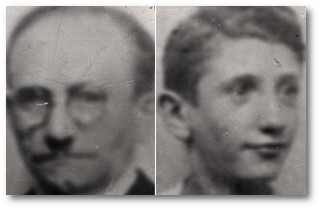
Ill.7: Markus Jeckel and his son Isidor, called “Isi”.
We have no knowledge of what happened to Markus and Cilla Jeckel after they were expelled to Poland. The first sign of life from Isidor Jeckel is a letter he wrote to his friend Ernst Alexander who also came from Gelsenirchen. In January 1938 Ernst Alexander’s mother Frieda was able to send him to safety in the USA. Below there is a letter that Isidor Jeckel wrote in Zbąszyń. He was 16 years old. The letter is dated 9 January 1939 and in it Isidor describes his arrest in Gelsenkirchen and the inhuman conditions in the Polish border camp in Zbąszyń. He describes how he and his father were taken to prison directly from their workplace in Gelsenkirchen without any opportunity to pick up appropriate clothing from their home, Isidor also writes: “(…) I wish all the best and above all I wish that no Jewish boy every gets into a situation like the one I am in now (…).”
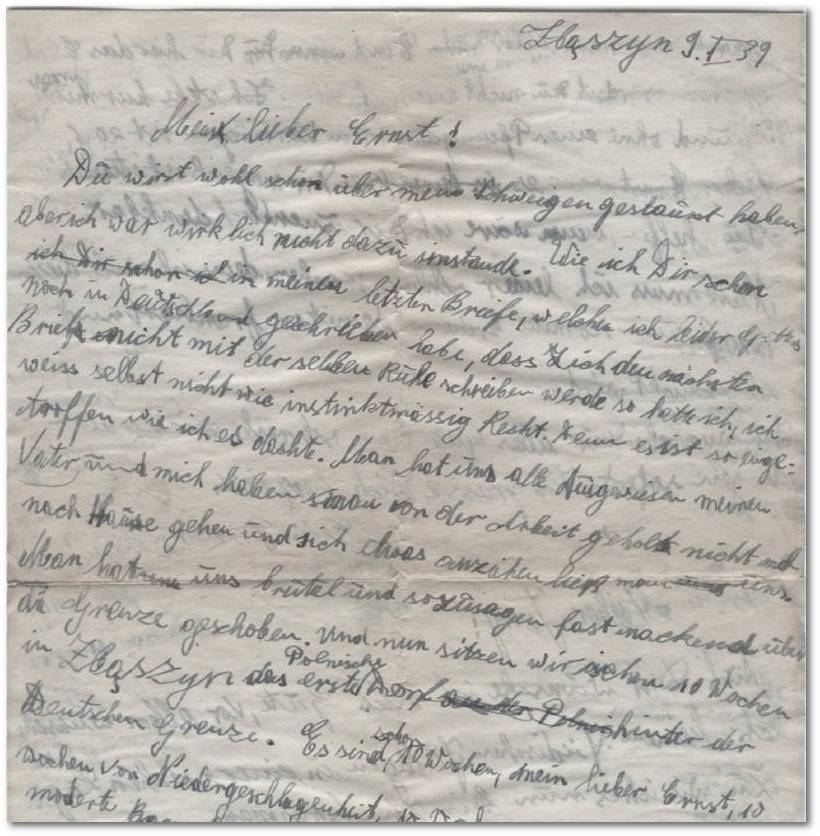
Ill.8: In January 1939 Isidor Jeckel writes from Bentschen (Zbąszyń) to his friend Ernst Alexander in the USA.
|
The stumbling stones in memory of the life and suffering of Markus, Cilla and Isidor Jeckel, have been sponsored by Else Asemann.
Sources:
Gedenkbuch BA
Yad Vashem, Central Database of Shoa victims Names; db.yadvashem.org; Abruf Mai 2013
Abb.1-5+7: Privatbesitz Familie Jeckel/Buswell
Abb.6: Privatbesitz Familie Alexander
[1] Melderegister, StA Gelsenkirchen
[2] Namensliste des "Wiedergutmachungsamtes" der Stadt Gelsenkirchen v. 15.10.1963, Leo Baeck Institut, New York
|
Stumbling stones for Markus, Cilla and Isidor Jeckel. Laid on 14 August 2015.
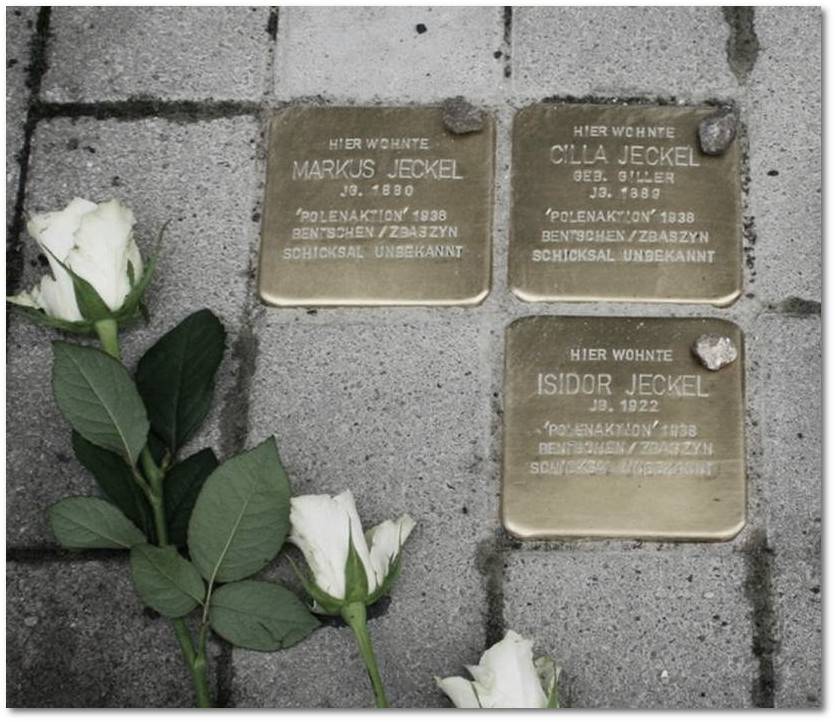
|
Andreas Jordan, Projektgruppe STOLPERSTEINE Gelsenkirchen, May 2013. Edit: in 2015; in January 2017.
|
↑ Top
|
|